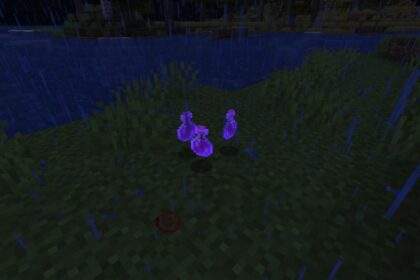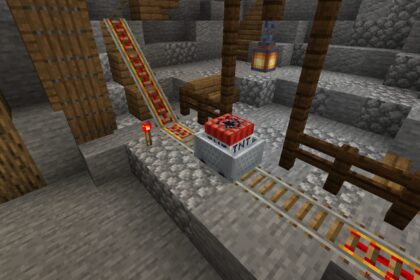As passive transportation farm animals in Minecraft, horses play a massive role in the game. A horse can significantly speed up the gameplay progression, especially if you’re fond of the nomad play style.
Although somewhat common to find, horses can be tricky to tame and ride. There are various steps a player must take to befriend a horse. Nevertheless, taming horses is highly compensatory since it’ll allow players to breed them.
Breeding horses is somewhat challenging since it requires some significant extra steps. In addition, taking care of the bred horse and its upcoming foal isn’t a straightforward task. Therefore, let’s cut the challenge and lay out some fundamentals on the Minecraft horse breeding guide.
Horses
Firstly, let’s discuss the essentials surrounding horses in Minecraft.
Horses are passive mobs; they can be farm animals or wild ones. A farm horse is found inside villages, immediate to the village’s farmer’s job site, whereas a wild horse appears roaming free in different biomes.

Farm horses can spawn alone or accompanied; since they generate inside animal pens, they don’t roam through the region.
Wild horses never spawn alone. Instead, these horses appear in herds of at least two, with bigger packs reaching a total of six horses. The main biomes you’ll find wild horses roaming free are:
- Plains
- Sunflower Plains
- Savannas
- Savanna Plateau
- Windswept Savanna
Taming Horses
After finding a horse in Minecraft, you can quickly tame it by either mounting it enough times or feeding and mounting it.
The main difference between both methods is that the first one might take a good amount of extra time since it relies solely on the player’s persistence. After every mounting attempt, the horse will try to throw the player off its back; with enough tries, the horse will familiarize itself with the player.

The second method relies on convincing the horse with food. Every unit of apple, carrot, golden apple, golden carrot or alternatives the player gives to the horse will enhance the animal’s “temper.”
Mounting, when associated with feeding the horse, can significantly speed up the taming process by positively impacting the horse’s “temper” status.
You’ll know the taming attempt is successful after the horse emits a few hearts above itself when you mount it.

Breeding Horses
After successfully taming a horse, you can breed it. However, the breeding process can only occur between two tamed horses; so ensure that you tame at least one more.
Unlike most farm animals, horses need particular types of food to enter “love mode.” In this sense, typical wheat units, which usually work fine for pigs, sheep, and chickens, won’t work for horses. Instead, to breed horses, you’ll need:
- Golden Apples
- Golden Carrots
The process, however, is the same as most farm animal breeding methods. Feeding two horses with any food alternatives above make them willing to mate. The resulting mob is a foal.

Alternatively, you can breed horses with a different mob: the donkey. The resulting mob won’t be a typical foal when breeding a horse with a donkey. Instead, this cross-breeding process will generate a mule foal. The player will also receive the “artificial selection” achievement.
If you want to organize where the horses should stay after you start breeding them, check our article about building stables for horses.
Foals
When spawning, foals can display the color and patterns of one of their parents. However, there is still a chance of it being born with random markings and colors. More specifically, the prospects are:
- Color and markings of parents: 44.44% for each parent.
- Random color and markings: 11.1%
After birth, foals can take up to 20 minutes to fully mature. However, players can give food to foals, making them mature faster. Depending on the type of food you provide to the foal, you can cut four minutes off from its regular maturing time. The food alternatives and times are:
- Wheat – 20 seconds.
- Sugar – 30 seconds.
- Apple – 1 minute.
- Golden Carrot – 1 minute.
- Hay Bale – 3 minutes.
- Golden Apple – 4 minutes.
After the foal reaches its mature size, you’ll be able to mount it and bond with it. Still, you’ll need a saddle to control it and use it as transportation adequately.

Foal Statistics
A foal contains a few stats after birth, which you can determine beforehand by analyzing its parents’ statistics.
When horses spawn naturally through the game’s map generation, they’ll have random health, speed, and jump strength values. However, a foal will contain the average of both parents’ stats with a third set.
In this sense, a foal’s statistics will depend on its parents’ stats and a third random value. More specifically, the game sums both parents’ statistics and a random stat and divides it by three. So, the same horse couple won’t always generate same-stat foals.
Concerning movement statistics, a horse’s maximum running speed is 14.57 blocks per second; the minimum is 4.32 blocks per second, and the average is 9.7 blocks per second.
Concerning jump strength, horses jump an average of 0.7, with the minimum being 0.4 and the maximum 1.0. A 1.0 jump strength is enough to hop over five and a quarter blocks.
Concerning health values, horses’ hearts sit at an average of 22.5 halves a heart; the minimum is 15, and the maximum is 30.

By tracking the statistics of horses, you can categorize two high-stat horses and breed them. The result will be an above-average foal. This way, you can create the best horse in Minecraft.
To analyze the statistics of a horse, you’ll need a saddle. In this context, both parents of the foal must be saddled up. After saddling the horses, you can control them and analyze their speed and jump strength.
Analyzing a horse’s health is more straightforward because the values automatically display after you mount a horse with or without a saddle. But, to track speed and jump, you’ll need to control the horse.
When controlling the horse, use visual references to note its block running speed. For instance, build “checkpoints” between a specific number of blocks and, with a clock, track how much the horse takes to run the path on a straight line.
To track the horse’s jumping power, use a marker on the ground, run the horse straight at it and jump on the spot. Then, count the number of blocks the horse could jump; if it’s something around five, the horse has an excellent jump strength.






